April 2019 archive
Fifth grade students will take the Measures of Academic Progress (MAP) Math assessment this Wednesday, May 1st. MAP is a computer adaptive test, which means every student gets a unique set of test questions based on responses to previous questions. As the student answers correctly, questions get harder. If the student answers incorrectly, the questions get easier. The data received from these assessments will help guide our educational practices as well as give us a better understanding of the academic opportunities we can provide for your child.
Please make sure your child gets the recommended amount of sleep the night before and a good breakfast to help them prepare for the test. For more information, contact Gev. Broidy, jbroidy@mjds.org.
Do we need to add, subtract, multiple, or divide?
This is a question we have focused a lot on this week when taking a close look into solving word problems in math.
As a class, as well as with partners, the kids have been reading through word problems and really dissecting them so they understand what operation to use. To help them when solving these problems, the kids developed a list of strategies that they could use when they are not quite sure what to do.
When working on problems at home, please reference this chart. Drawing a visual is a great tool because it allows us to really see each piece of the problem. This is something the kids will be expected to do on quizzes and tests.
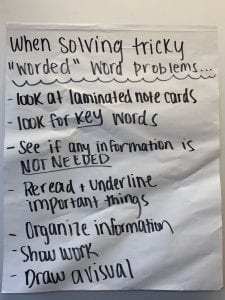
After Passover Break we will be finishing up this unit, reviewing, and preparing for our unit test.
Have a wonderful break!
Over the past few weeks, 5th grade students have started to write their first scientific explanations. To start off our unit, students wrote short, quick explanations to prove a scientific concept. This week, we started investigating the three states of matter, which will help the kids determine and prove if oobleck is a solid or a liquid in their final explanation. The kids researched scientific vocabulary to help describe oobleck studying words such as viscosity, surface tension, and amorphous. We then, needed to create and test oobleck to see how it interacted with different tasks to help us determine the state of matter it is in.
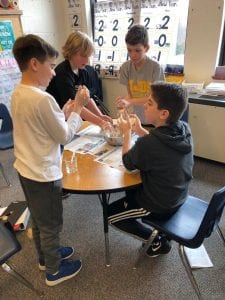
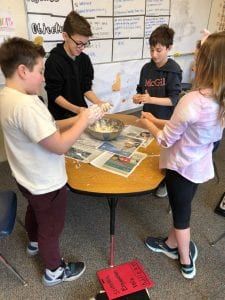
After students had made the oobleck, they were asked to observe and record what happened to the it based on different tasks and determine if it behaved more like a solid or a liquid.
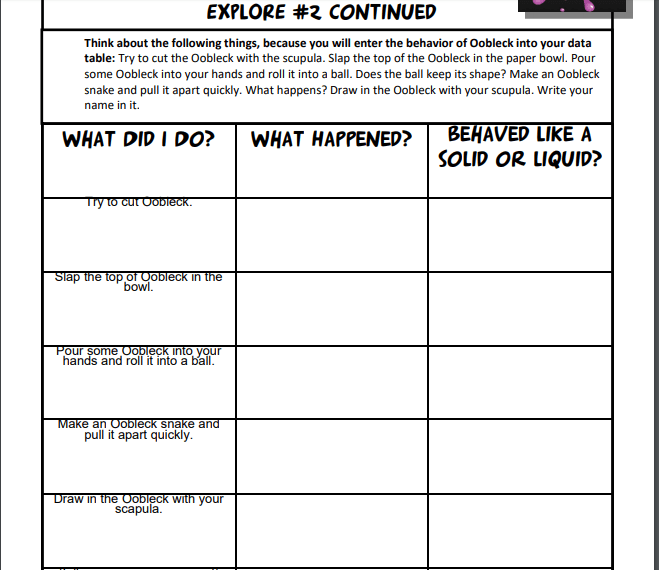
Today, we will begin to discuss our observations and record our evidence that proves whether oobleck is a solid, a liquid, or both?! I cannot wait to see what the kids have to share.
Stay tuned to see their scientific explanations!
Have a wonderful weekend 🙂
As we approach the end of our chemistry unit, students have been investigating how temperature affects the time it takes an odor to travel across a room. Through our labs, videos, readings, and discussions, the kids realized that the hotter the temperature of the gas, the faster the molecules move. As a result, they collide more with the air molecules, which causes the gas molecules to slow down and become cooler. The kids have been doing a fantastic job modeling and explaining how this works and why this happens. I have been SO impressed.
Today, students explored boiling point as a property, incorporating what they know about temperature and molecules. After completing this lab, students were able to explain how a specific substance always has the same boiling point, which makes it a property.
Moving forward we will continue to investigate molecules and how they interact depending on the temperature of a substance.
Students will have an assessment that covers this unit the week after spring break.
Have a great weekend!
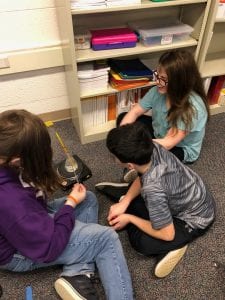
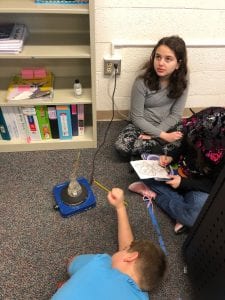
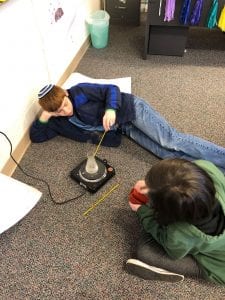

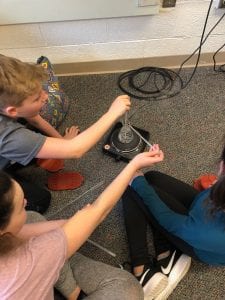
Hi 5th Grade Families,
This week 5th graders started their next unit in math – solving word problems! Students will be diving deeper into understanding how to solve word problems, how to write word problems, and how to differentiate between multiplication, division, subtraction, and addition depending on key words within the problem. Today, students worked on questioning when solving realistic situational problems.
Students were posed the situation, “You are hosting a barbecue that starts very soon and you want to make as many biscuits as possible with the ingredients you already have.” As a group, students shared out any questions that came to mind based on this situation. Students said things like, “how many people are we baking for?”, or “what do we need to make the biscuits?”, or “how much time do we have to make the biscuits?”, etc. After recording 20 + questions on the board, we narrowed it down to three main questions that would be necessary to figure out to be able to solve the problem:
- What ingredients do we need?
- How much of each ingredient do we have?
- How much of each ingredient do we need?
As a class, we answered each of these questions, and then the fun started – solving the problem! It was great to see how so many students worked on solving this problem. There were no directions given, all that was expected was that they try out different ideas and see what worked and what was reasonable. Some students used division to solve the problem and as a class we discussed how we could have also solved it with subtraction.
Students did a great job thinking through this problem. I am excited to see them grow throughout this unit!
Stay tuned for some awesome work problems the students create 🙂
Just a reminder-
MJDS student-led conferences (SLC) are on Tuesday, April 2, and Wednesday, April 3. School will be dismissed at noon on Tuesday, April 2, and there will be no school on Wednesday, April 3.
Looking forward to seeing everyone at conferences.
The kids have been doing amazing things!








